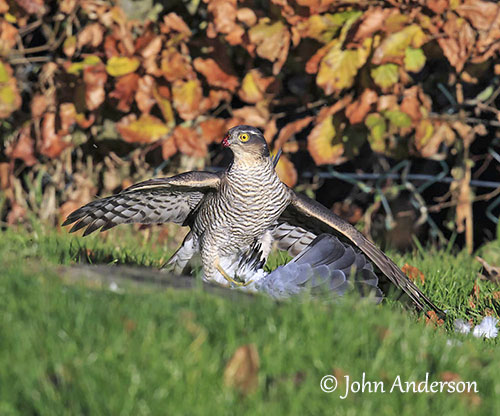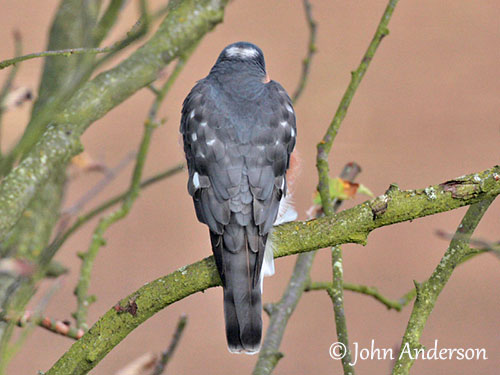
Photographer:
John Anderson
John Anderson Photo Galleries
Text by Nicole Bouglouan
Sources:
HANDBOOK OF THE BIRDS OF THE WORLD Vol 2 by Josep del Hoyo-Andrew Elliot-Jordi Sargatal - Lynx Edicions - ISBN: 8487334156
THE COMPLETE BOOK OF BRITISH BIRDS – Written by “Royal Society for the Protection of Birds” experts - Préface de Magnus Magnusson - Michael Cady- Rob Hume Editors - ISBN: 0749509112
GUIDE DES RAPACES DIURNES – Europe, Afrique du Nord et Moyen-Orient de Benny Génsbol – Delachaux et Niestlé – ISBN : 2603013270
Animal Diversity Web (University of Michigan Museum of Zoology)
Wikipedia, the free encyclopaedia
All pictures on this page are owned by John Anderson.
These images and the text are subject to copyright and cannot be used without express authorization from the owners. Legal issues
Eurasian Sparrowhawk hunting behaviour
Accipiter nisus
The Eurasian Sparrowhawk is an elegant raptor in the genus Accipiter. It is not a large Bird of prey, but it is known for its hunting behaviour.
The blue-grey upperparts of the male show whitish spots on the sides and the hindneck, whereas the white underparts are barred rufous, with reddish tinge on cheeks and flanks. The eyes are orange-red to scarlet-red, surrounded by yellow eyering.
The female is mostly grey-brown above, and the whitish underparts show dark barring. The eyes are bright yellow to orange. Both have two long claws, well-adapted to their hunting behaviour.


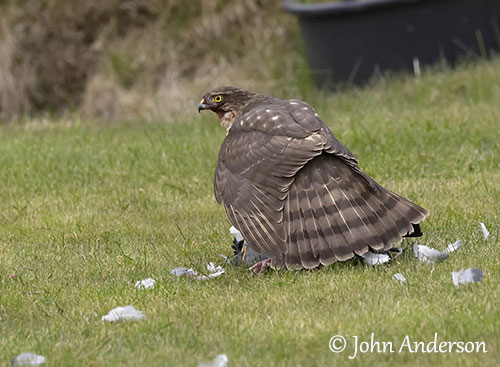
The Eurasian Sparrowhawk hunts exclusively small and medium-sized birds of about 40 grams for the male to 150/500 grams and more for the female.
Their preferred prey often forage on the ground and include small passerines such as sparrows, tits, buntings, chaffinches and larks, and sometimes larger birds such as thrushes and starlings.
Other types of prey are taken depending on the season. Young hares and rabbits, shrews, bats, lizards, amphibians and insects are also part of the diet.
The female which is 16-20% larger than the male is able to take bigger game birds up to 150 grams and more, such as pigeons of genus Columba, Willow Grouse, Grey Partridge and other Galliformes.
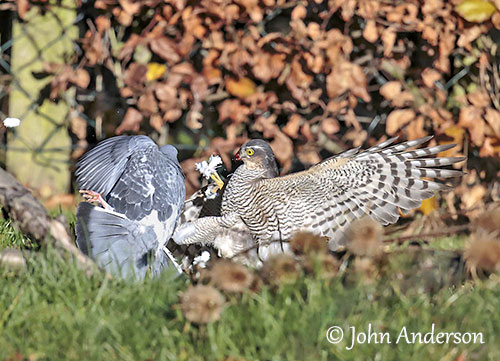
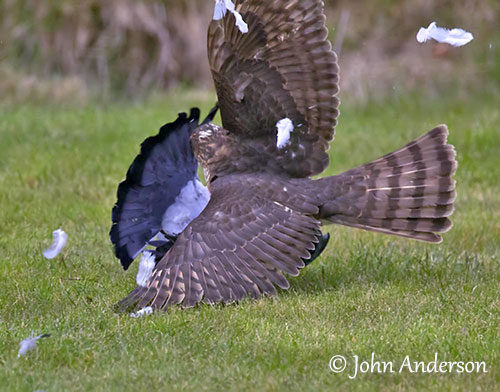
The Eurasian Sparrowhawk male usually hunts in wooded areas and catches smaller prey, whereas the larger female hunts in more wide open areas such as clearings, wood edges and sparsely wooded patches.
This raptor hunts stealthily in order to surprise the prey. It flies under the vegetal cover or performs short flights from perch to perch, usually concealed ones, until a prey draws close.
At this moment, the bird emerges from the vegetal cover and catches it by flying fast and low to the ground. It may also chase the victim, flipping upside-down to grab it from below, or by following it while walking on the ground through the vegetation.
Another behaviour shows the raptor stooping onto the prey from a great height.
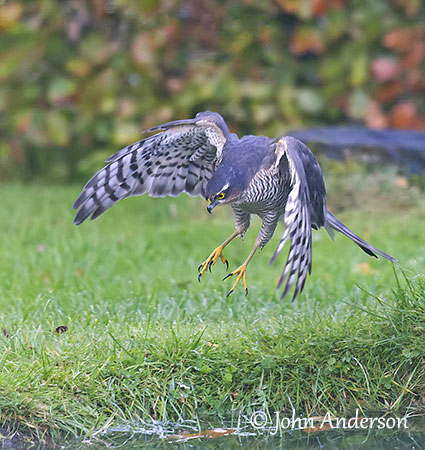
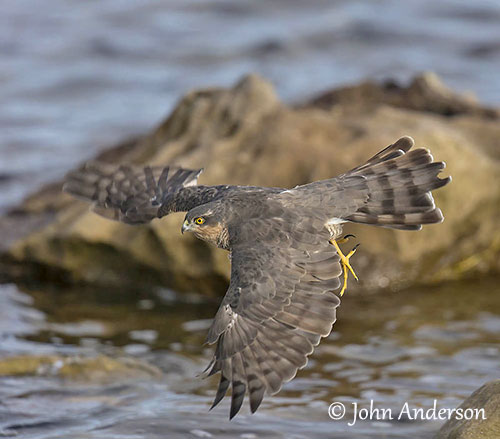
The small birds are killed on impact, but the raptor also uses its feet, and especially the two long claws.
While the prey is struggling, the raptor uses its talons to squeeze and stab the poor victim. Then it stands on top of the dead body to pluck and pull it apart. It usually eats the breast muscles first after removing the feathers.
Then, the raptor carries the victim to a log or a stump in order to remove the feathers before to eat the prey. During the nesting season, this post is in the surrounding of the nest. After plucking the prey, it brings it to the nest where both female and young are waiting for food.
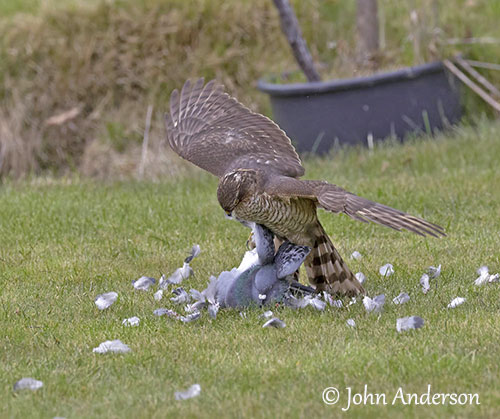
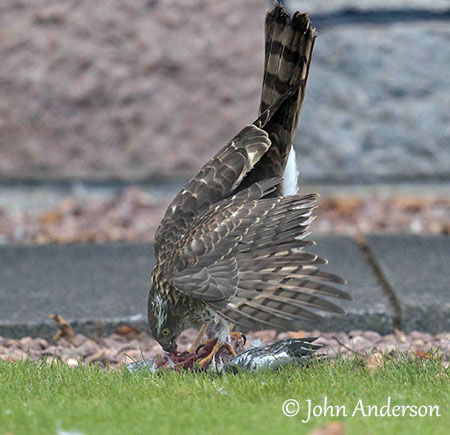
Following such behaviour, we may find sometimes several small scattered piles of feathers in the garden, witnesses of an intense moment for this beautiful raptor, but mainly sad and difficult for the prey.
This is the usual course of life in Nature.
